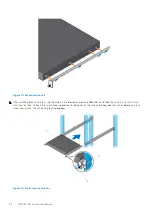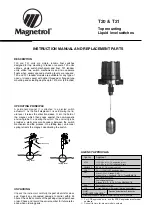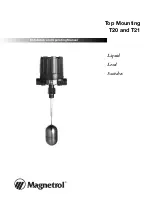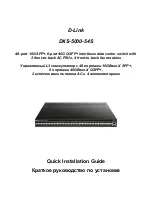
ONIE service discovery
ONIE attempts to locate the installer through several discovery methods, as shown. To download and run an installer, the ONIE
Service Discovery feature uses the first successful method found.
1. Search locally attached storage devices for one of the ONIE default installer filenames—for example, the filename is:
onie
self update
from the USB.
2. Query to the IPv4 and IPv6 link-local neighbors using HTTP for an installer.
3. Exact URLs from DHCPv4.
4. Discover TFTP-based image from the DHCP server.
If none of the ONIE Service Discovery methods are successful, you can disable this using the
onie-discovery-stop
command.
You can install an operating system manually from HTTP, FTP, or TFTP using the
onie-nos-install <URL>
command.
NOTE:
If you have a recovery USB plugged into your switch, you must remove it before installing the DIAG-OS using the
onie-nos-install
command.
The ONIE Install environment uses DHCP to assign an IP address to the management interface—eth0. If that fails, it uses the
default IP address 192.168.3.10/255.255.255.0.
To display the IP address, use the
ifconfig eth0
command, as shown.
ONIE:/ # ifconfig eth0
eth0 Link encap:Ethernet HWaddr 90:B1:1C:F4:9C:76
inet addr:10.11.53.33 Bcast:10.255.255.255 Mask:255.0.0.0
inet6 addr: fe80::92b1:1cff:fef4:9c76/64 Scope:Link
UP BROADCAST RUNNING MULTICAST MTU:1500 Metric:1
RX packets:18 errors:0 dropped:0 overruns:0 frame:0
TX packets:24 errors:0 dropped:0 overruns:0 carrier:0 collisions:0 txqueuelen:1000
RX bytes:1152 (1.1 KiB) TX bytes:6864 (6.7 KiB)
Interrupt:21 Memory:ff300000-ff320000
To assign an IP address to the management interface, eth0, and verify network connectivity, use the
ifconfig eth0
<ip
address>
command, as shown.
ONIE:/ # ifconfig eth0 10.11.53.33/16 UP
Verify the network connection with ping.
ONIE:/ # ping 10.11.8.12
PING 10.11.8.12 (10.11.8.12): 56 data bytes
64 bytes from 10.11.8.12: seq=0 ttl=62 time=1.357 ms
64 bytes from 10.11.8.12: seq=1 ttl=62 time=0.577 ms
^C
38
Management ports








































